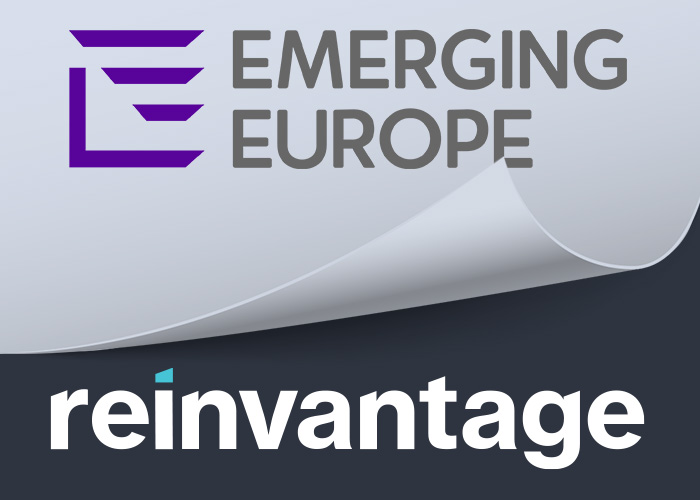In warehouses and tech parks from Kyiv to Kraków, entrepreneurs once building apps and software are now designing drones and cyber defences. Russia’s invasion forced a swift pivot, and in doing so, turned Central and Eastern Europe into the unexpected frontier of military-tech innovation and economic renewal.
Russia’s war in Ukraine has not only shattered Europe’s decades-long peace but also reshaped economic geography, security, and investment flows across Central and Eastern Europe.
The invasion has prompted foreign investors to recalibrate risks, driven unprecedented innovation in military and dual-use technologies, and accelerated infrastructure projects.
Above all, Ukraine’s tragedy has catalysed a wave of reinvention, creating winners—and losers—in a region transformed by war.
Foreign investors look westward
Before Russia’s tanks rolled across Ukraine’s border, Eastern Europe, especially Ukraine itself, was an increasingly attractive destination for foreign direct investment (FDI).
Its vibrant IT sector, cheap skilled labour, and proximity to Europe drew multinationals seeking cost-effective talent. War quickly flipped that script. In the months following the invasion, foreign investors pulled out from Ukraine, fearing disruption, sanctions spillovers, and escalating regional instability.
But investors have not abandoned Eastern Europe; instead, they’ve pivoted westward within the region, primarily towards Poland and Romania.
Poland’s stability, NATO membership, and proactive stance in supporting Ukraine have boosted its profile as a reliable business hub. Companies from IT giants to automotive manufacturers have rapidly expanded their operations there, attracted by its robust infrastructure and European Union security umbrella.
Romania, similarly, has benefited from reshuffled investment patterns. Long overlooked due to bureaucratic sluggishness and infrastructure gaps, Romania has aggressively streamlined its processes, aiming to capture fleeing capital. Bucharest is becoming a regional tech hub, notably attracting cybersecurity and fintech firms wary of geopolitical threats farther east.
Yet not all neighbouring states have equally thrived. Hungary’s ambivalent political stance towards Russia’s aggression has deterred some Western investors, who perceive Viktor Orbán’s government as too cosy with Moscow.
The contrast demonstrates how geopolitical alignment—and diplomatic clarity—have become key factors reshaping investor confidence in Central Europe.
Defence tech: Innovation in wartime
Ukraine’s existential fight has catalysed extraordinary military-tech innovation, reshaping defence industries across the region.
Start-ups have surged, often founded by tech entrepreneurs pivoting from commercial to dual-use technologies. Drones, surveillance systems, and artificial intelligence applications designed to assist Ukrainian forces now find customers across NATO, eager to absorb battle-proven solutions.
Companies like Ukraine’s AeroDrone have gained international attention with low-cost, high-performance drone systems. Indeed, since 2022, the number of Ukrainian drone manufacturers has risen from four to more than 500. A research paper published last month by the Massachusetts Institute of Technology and the Kyiv School of Economics examined how Ukraine had adopted a “whole of nation” approach to mobilise civilian resources for drone development.
Its defence tech cluster is driven by the relationship between five forces: start-ups; risk capital; universities; government agencies; and established defence companies.
Poland, capitalising on this trend, is similarly building a defence tech ecosystem, centred around Warsaw, luring tech entrepreneurs and former Ukrainian businesses. New ventures have emerged in cybersecurity, battlefield communications, and drone defence, driven by urgent NATO demand and abundant funding from governments keen to reinforce NATO’s eastern flank.
Such dual-use technology innovation represents not just a wartime necessity but an enduring economic legacy. The defence tech hubs emerging in Warsaw and Bucharest promise to generate substantial long-term growth, attracting high-skilled workers and significant international investment.
The sector is reinventing itself, shifting from heavy legacy equipment towards agile, technology-centric solutions adapted for rapid deployment.
NATO expansion as an economic driver
The ripple effects of NATO expansion triggered by the Ukraine war have economic implications beyond military spending. Sweden and Finland joining NATO not only altered geopolitical calculations but also boosted investor confidence in the Baltic Sea region.
Investors have bet on increased defence budgets, enhanced infrastructure spending, and reinforced security guarantees.
Countries such as Estonia, Latvia, and Lithuania have seen increased investment flows as NATO bolsters its Baltic presence, pumping money into infrastructure projects, cybersecurity, and logistics. Infrastructure firms are benefitting significantly from NATO-related investments, constructing bases, airfields, and critical digital infrastructure.
This spending, intended initially as strategic defence outlays, increasingly spills over into local economies, creating new growth opportunities across the Baltic states.
Ukraine’s tech diaspora: Building abroad, eyeing home
Perhaps Ukraine’s greatest contribution to regional reinvention is its displaced, yet resilient, tech diaspora.
Millions of Ukrainians fled west, taking with them valuable technical expertise and entrepreneurial energy. Poland, Romania, the Czech Republic, and Germany have been primary beneficiaries, absorbing tens of thousands of skilled Ukrainian IT professionals.
These expatriate communities have quickly integrated into local tech ecosystems, launching new businesses or reinvigorating established companies. Their entrepreneurial impact is significant: they have increased local innovation capacity, filled labour shortages, and enhanced host countries’ attractiveness to foreign investors seeking skilled tech talent.
But importantly, this diaspora remains connected to Ukraine. Many IT specialists abroad continue contributing remotely to Ukrainian companies or are involved in dual-location ventures, preparing for an eventual return.
Investment in Ukrainian start-ups, supported by the diaspora, continues robustly from locations like Warsaw or Prague, anticipating future reconstruction efforts.
Reinvention as opportunity
The reinvention sparked by Russia’s war in Ukraine has not merely been reactive. It embodies a strategic reorientation towards economic resilience and technological agility.
Foreign direct investments reshaped by geopolitical risk; defence tech innovation redefining regional industries; NATO expansion driving infrastructure and economic confidence; and Ukraine’s displaced tech workforce building innovative communities abroad—all underscore this dramatic transformation.
For foreign investors and regional policymakers alike, the challenge now lies in solidifying these gains into durable economic strengths. The war next door may have inflicted severe disruption, but it has simultaneously unveiled surprising resilience, adaptability, and entrepreneurial dynamism across Central and Eastern Europe.
As Ukraine continues to fight, the region around it is reinventing itself—drawing strength from the darkest of circumstances.
Photo: Dreamstime.


Add Comment